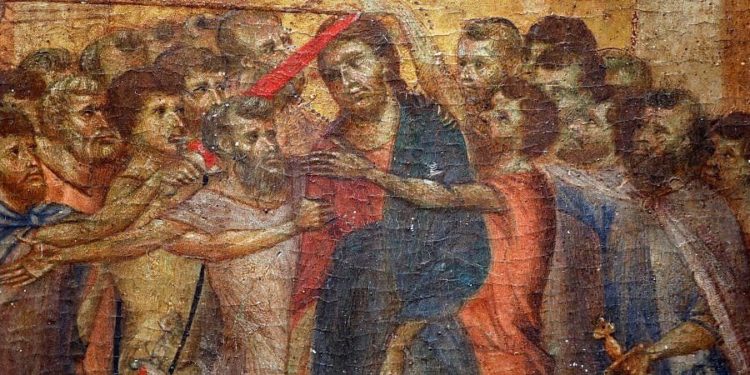An old painting found in the kitchen of an elderly French woman who considered it of little importance has sold for €24m (£20.7m) at auction.
The work, an early Renaissance masterpiece attributed to the 13th-century Italian painter Cimabue that was discovered earlier this year, was bought by an anonymous buyer near Chantilly, north of Paris.
Stephane Pinta, a painting specialist with the Turquin gallery in Paris, said an auctioneer spotted the painting in June while inspecting the woman’s house in Compiegne in northern France and suggested she bring it to experts for an evaluation.
Art experts say the 24 cm (10in) x 20 cm (8in) piece is probably part of a larger diptych that Cimabue painted around 1280, of which two other panels are displayed at the Frick Collection in New York and the National Gallery in London.
The painting’s discovery has sent ripples of excitement throughout the art world.
“When a unique work of a painter as rare as Cimabue comes to market, you have to be ready for surprises. This is the only Cimabue that has ever come on the market,” said Dominique Le Coent, head of auction house Acteon in Senlis, 40km (25 miles) north of Paris.
The auctioneer said the sale price represented a “world record for a primitive, or a pre-1500 work”.
“It’s a painting that was unique, splendid and monumental. Cimabue was the father of the Renaissance. But this sale goes beyond all our dreams.”
Cimabue, who taught the Italian master Giotto, is widely considered the forefather of the Italian Renaissance. He broke from the Byzantine style popular in the Middle Ages and began to incorporate elements of movement and perspective that came to characterise western painting.
Until recently, the work hung on a wall between the kitchen and the dining room in a house in Compiegne. Its owner, who is in her nineties and wants to remain anonymous, had considered it of little importance but it has now made her a multimillionaire.
Specialists at the Turquin gallery initially examined the painting and concluded with “certitude” that it bore the hallmarks of Cimabue.
Mr Pinta pointed to likenesses in facial expressions and buildings, as well as the painter’s techniques for conveying light and distance.



